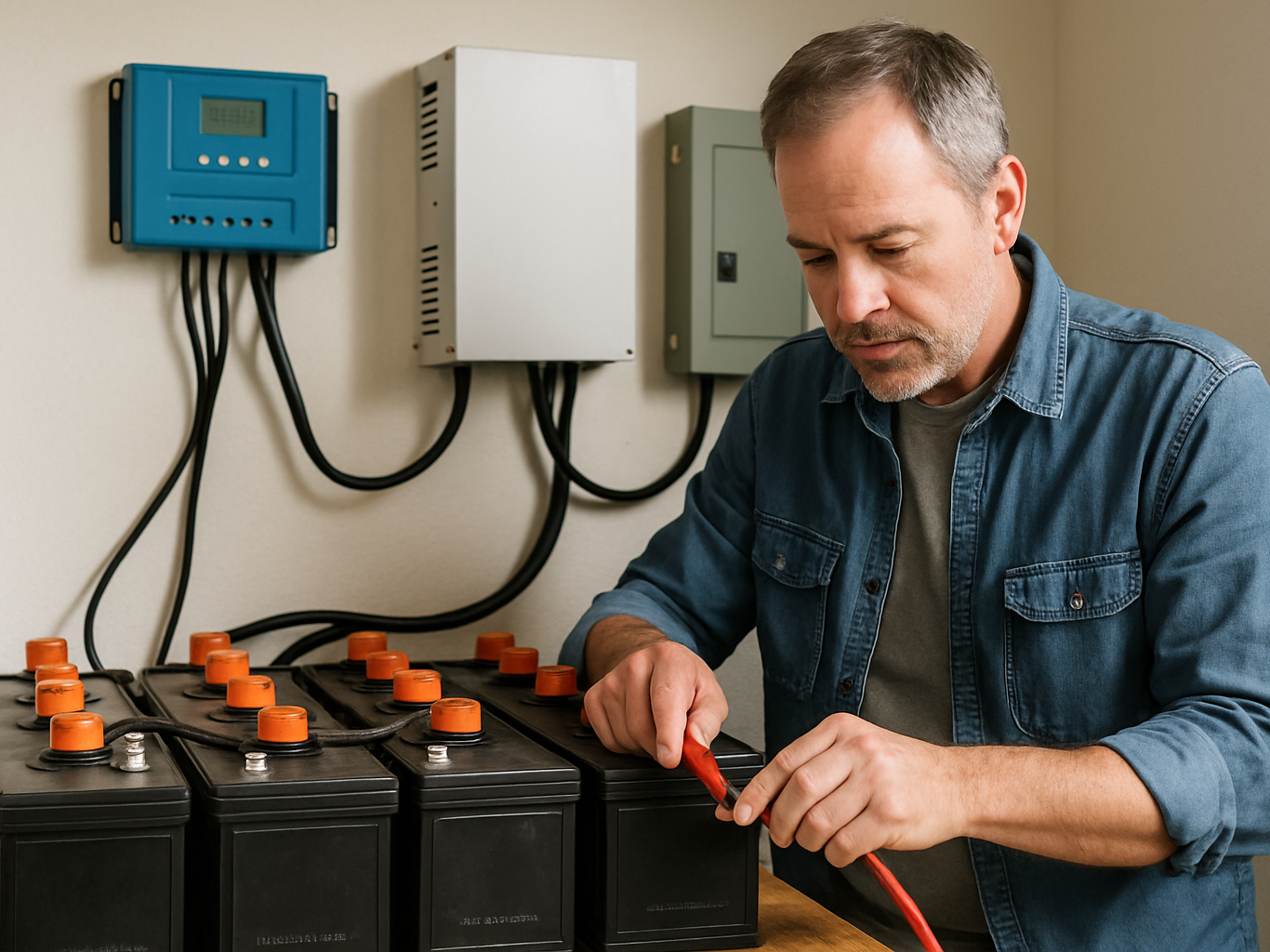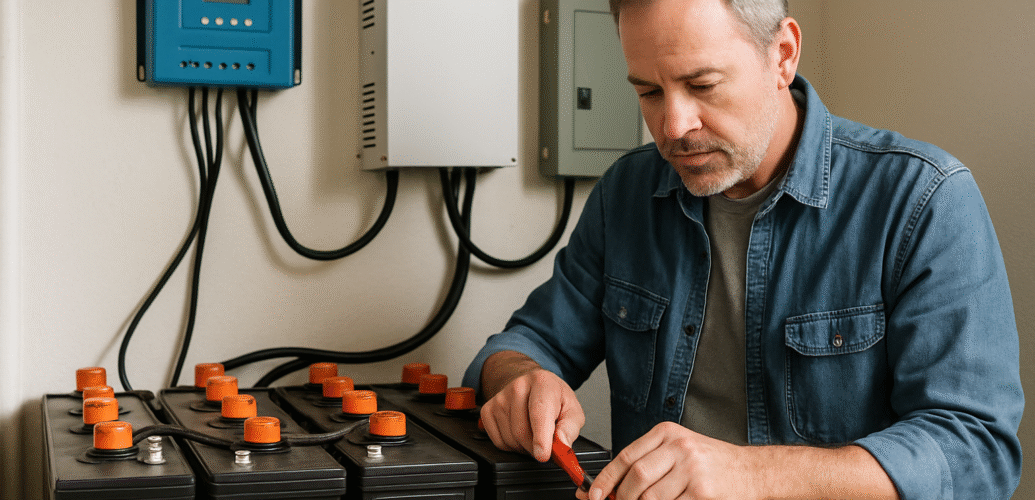Battery banks are the silent powerhouse behind any reliable off-grid system. Whether you’re living off the land or simply want to cut energy bills, understanding how these systems work is essential.
This guide will walk you through what battery banks are, how they function, and why they’re critical to off-grid living. If you’re new to this world, you’re in the right place.
We’ll also explore types of batteries, sizing basics, safety tips, and trends you should know.
What Are Battery Banks?
Battery banks are a group of batteries wired together to store electricity for later use. They act as the backbone of any off-grid energy setup, ensuring you have power when the sun isn’t shining or the wind isn’t blowing.
Why They Matter in Off-Grid Systems
Without battery banks, solar panels and wind turbines would be nearly useless at night or during calm days. They store excess energy produced during the day and release it when needed, giving you 24/7 electricity independence.

How Battery Banks Work
Basic Components and Functions
At their core, battery banks consist of:
- Individual batteries (usually 12V, 24V, or 48V)
- Cables to connect them
- Battery management systems (BMS)
When connected, they store Direct Current (DC) electricity, which can be converted to Alternating Current (AC) via an inverter.
How They Store and Deliver Power
When your solar panels generate more power than you need, the extra energy charges the batteries. When demand exceeds supply—like at night—the system draws from the battery bank.
Types of Batteries Used in Battery Banks

Lead-Acid vs. Lithium-Ion
- Lead-Acid Batteries: Affordable and proven, but heavy and have a shorter lifespan.
- Lithium-Ion Batteries: Lightweight, longer-lasting, and more efficient—but more expensive upfront.
Pros and Cons for Off-Grid Living
- Lead-acid: Lower cost, higher maintenance.
- Lithium-ion: Higher cost, lower maintenance, better performance.
How to Size Your Battery Bank
Understanding Your Power Needs
Start by listing all devices you want to power. Estimate how many watts they consume and how long they run daily.
Simple Calculations for Beginners
Here’s a basic formula:
Daily usage (Wh) = Total watts x Hours used per day
Battery bank capacity (Ah) = Daily usage / System voltage
Add a safety margin (usually 25-30%) to ensure you’re covered.
Installation and Safety Tips
Where to Place Your Battery Bank
- Keep batteries in a cool, dry, and ventilated area
- Avoid direct sunlight or damp environments
Common Mistakes to Avoid
- Mixing old and new batteries
- Ignoring maintenance schedules
- Improper wiring
Maintenance and Longevity
Best Practices to Extend Battery Life
- Regularly check voltage and connections
- Clean terminals
- Avoid deep discharges, especially with lead-acid batteries
Warning Signs of Battery Failure
- Reduced capacity
- Swelling or leakage
- Slow charging times
The Future of Battery Banks
Emerging Technologies
- Solid-state batteries
- Flow batteries
- Enhanced lithium chemistries
Trends in Off-Grid Energy Storage
Expect improvements in efficiency, safety, and affordability as the demand for off-grid solutions grows.
Final Thoughts: Choosing the Right Battery Bank for You
Choosing the right battery bank comes down to your energy needs, budget, and long-term plans. With the right setup, you’ll enjoy reliable, clean energy—day and night.
Start small, plan smart, and upgrade as you grow. The heart of your off-grid system deserves careful thought, and now, you’ve got the knowledge to make the right choice.

